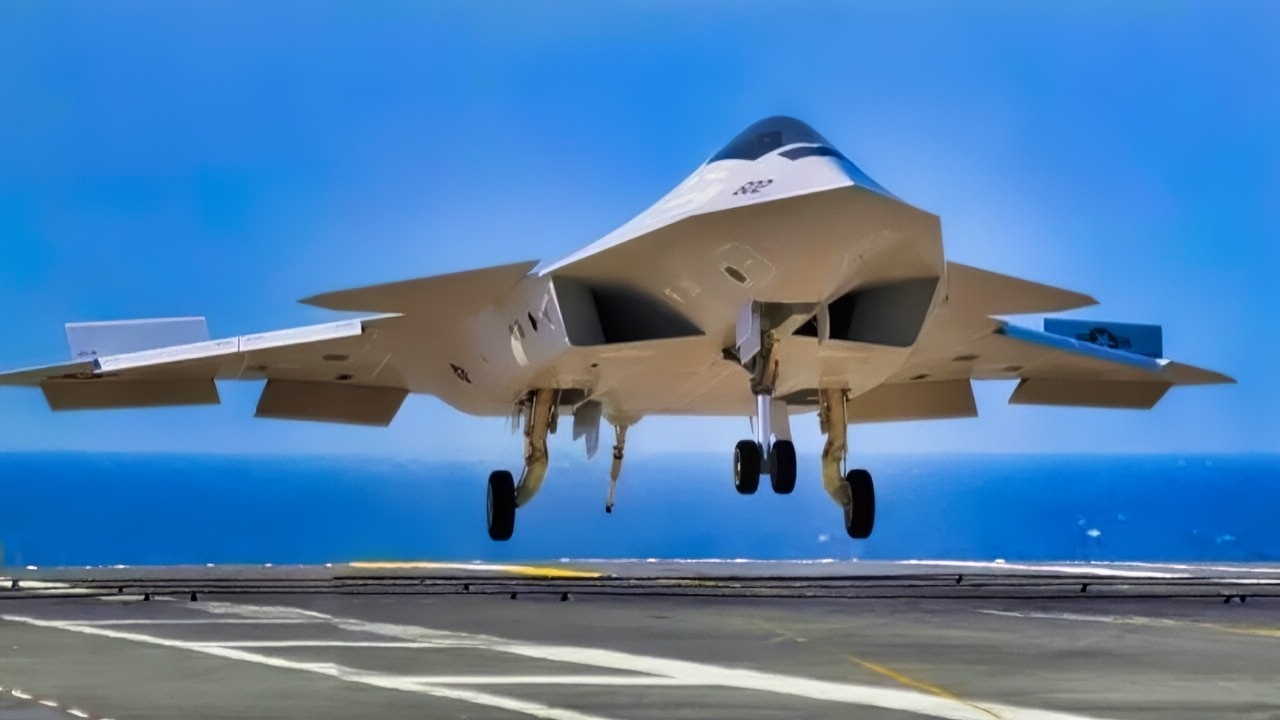Key Points and Summary – The F/A-XX is designed to be the U.S. Navy’s next-generation fighter jet to replace the aging F/A-18 and work in tandem with the F-35C.
-The project is of vital importance to the Navy, which has been in a state of decline for various reasons.
-However, the U.S. seems to be prioritizing the Air Force’s F-47, with the F/A-XX left to the wayside. The F/A-XX is vital for the U.S. to maintain deterrence, especially against adversaries like China.
-Delaying or dismissing the program is a shortsighted policy that will leave the Navy at a severe disadvantage in the next war.
Why the Navy Needs the F/A-XX
The Navy currently relies on the F/A-18E/F Super Hornet and the F-35C Lightning II for its carrier-based fighter operations.
While these platforms are competent, they are increasingly challenged by the expanding capabilities of adversaries.
China, for example, has developed long-range air-to-air missiles, such as the PL-15 and PL-17, as well as stealth aircraft like the J-20 and J-35, and advanced integrated air defense systems that make it difficult for current U.S. aircraft to operate with superiority.
Rear Admiral Michael Donnelly, Director of Navy Air Warfare Division, has emphasized that the Navy currently operates “at parity” with adversaries, underscoring the urgent need for the F/A-XX to restore overmatch.
The strategic concept of “outer air battle,” which involves engaging threats before they can launch weapons, requires aircraft with extended range, advanced sensors, and superior survivability.
The F/A-XX is being designed specifically to fulfill this role. It is expected to deliver a transformative leap in capability across several domains. One of the most critical improvements is its extended range.
The F/A-XX is projected to have a 25% greater combat radius than current platforms, though its total range is not yet known. This extended reach allows aircraft carriers to operate farther from hostile shores while still projecting power effectively.
The U.S. Navy is Falling Behind
Despite the probability of a war in the Pacific in the following decades, the Navy has been left to the wayside.
The DoD has decided to go all in on the Air Force’s F-47 fighter jet, leaving only the bare minimum for the Navy to keep the F/A-XX on life support.
This development aligns with the Navy’s overall decline in capability, stemming from labor shortages, recruitment and retention issues, and the fleet’s overall downsizing.
These are all symptoms of short-sided policy and an overall confusion over the Navy’s role in world affairs (a topic for another day).

F/A-XX U.S. Navy Fighter. Image Credit: Creative Commons.
With all that being said, it is not too late to change course. The F/A-XX is not the solution to all of the Navy’s problems; it would be a much-welcomed addition. While the F/A-18 and F-35C are still capable fighters, they alone are not enough to effectively counter the threat posed by China.
What the Navy needs is a fast, long-range, heavily armed strike fighter to suppress the air and surface threats to the carrier, thereby clearing the way for follow-on strikes by F-35Cs. This is why the F/A-XX is key.
Securing Naval Air Dominance
In terms of survivability, the F/A-XX will feature enhanced stealth characteristics. These features will enable it to penetrate heavily defended airspace and conduct missions in environments where current aircraft would be vulnerable.
The aircraft’s larger airframe will support a greater internal weapons capacity, allowing it to carry hypersonic missiles and sophisticated electronic warfare systems. This modularity ensures that the F/A-XX can be rapidly upgraded to counter emerging threats.
Another key feature of the F/A-XX is its open architecture, which allows for the integration of new technologies and systems without requiring a complete redesign. This adaptability is crucial in an era of rapid technological advancement.

F/A-XX Fighter from Boeing. Image Credit: Boeing.
The aircraft will also be designed for manned-unmanned teaming (MUM-T), enabling it to operate alongside drones such as the MQ-25 Stingray. In this role, the F/A-XX will act as a “quarterback,” orchestrating intelligence, surveillance, reconnaissance, strike, and refueling missions.
Artificial intelligence will play a central role in this ecosystem, enhancing battlespace awareness and enabling faster, more informed decision-making.
Arguably More Important Than the F-47
Unlike the Air Force’s sixth-generation fighter, which is optimized for land-based operations, the F/A-XX must meet stringent carrier suitability standards.
These include folding wings, reinforced landing gear, and compatibility with catapult launch systems.
This makes the F/A-XX uniquely capable of projecting power from sea-based platforms, a critical advantage in scenarios where land bases may be denied or destroyed.
Carrier-based aviation provides unmatched mobility and flexibility, and the F/A-XX will enhance the Navy’s ability to conduct distributed maritime operations across vast oceanic theaters without reliance on fixed infrastructure.

F/A-XX Handout Photo from Northrop Grumman.
The F/A-XX is also designed to be a key node in the Pentagon’s Joint All-Domain Command and Control (JADC2) network.
It will integrate with space-based assets, undersea platforms, and cyber-resilient systems, enabling multi-domain operations and distributed lethality.
Its role as a command-and-control hub for unmanned systems and its compatibility with emerging technologies like adaptive propulsion and high-energy lasers position it as a central element of future carrier strike groups.
About the Author: Isaac Seitz
Isaac Seitz, a Defense Columnist, graduated from Patrick Henry College’s Strategic Intelligence and National Security program. He has also studied Russian at Middlebury Language Schools and has worked as an intelligence Analyst in the private sector.
Military Affairs
China’s Stealth Air Force Has 1 Mission










